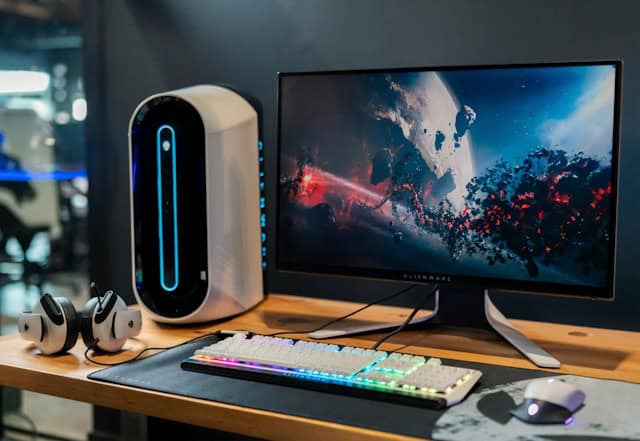By bringing dynamic, interesting approaches to enthral pupils, game technologies in education have revolutionised conventional learning. Teachers are building dynamic settings that support student involvement and improve learning results by using gamification in education, educational games, and virtual reality learning. These technologies encourage digital literacy and critical thinking among students by using interactive learning’s ideas to make difficult topics more approachable and fun.
In education, gamification is using game-like components such as points, badges, and leaderboards in non-game environments to increase student involvement and drive. This method makes studying seem like an interesting task because it appeals to students’ inherent need for success and rivalry. Platforms like Kahoot! and Classcraft, for example, use instructional games to transform classroom exercises and tests into interactive experiences, therefore promoting active learning.
Psychological needs and video games
Video games in the classroom provide important psychological demands that motivate and involve students. Self-determination theory holds that people want relatedness, autonomy, and competence all of which instructional games may provide. Websites like Betting.BC.Game show how game design including incentives and challenges helps students to accomplish and motivates them to grasp difficult subjects. Puzzle-based games, for instance, improve critical thinking by letting kids test and grow from errors in a controlled setting. Games fulfil psychological demands, therefore fostering an interactive learning environment that encourages emotional involvement in school. As students advance at their own speed, developing confidence and a feeling of control over their educational path, this strategy not only increases digital literacy but also fosters individualised learning.
Younger Generations, New Routines
Particularly Gen Z and Alpha, new generations show learning patterns impacted by technology and want creative ideas like gaming technologies in school. These digital natives want engaging learning settings fit for their tech-savvy way of living. Websites like. Reflecting a trend towards immersive learning, Wikipedia notes that seventy percent of Gen Z students prefer studying via digital media. By providing dynamic, self-paced experiences that boost student motivation, virtual reality learning and educational games fit these patterns. These devices help encourage digital literacy, therefore arming pupils for professions in a technologically advanced environment. Embracing game-based learning can help teachers close generational gaps and guarantee that learning results match the standards of a 21st-century education while fostering critical thinking and flexibility.
Educational Video Games: Actual Case Studies
Video games’ transforming power is shown via practical uses in the classroom. For example, uses gamification in education by means of competitive challenges teaching probability and strategic thinking, therefore involving students in math-related tasks. Duolingo is another example as it makes language learning interactive via instructional games with streak incentives increasing student motivation. Games like Prognosis model patient situations in medical education, therefore developing decision-making abilities. These case studies show how game-based learning meets various student requirements and enables individualised learning. These systems increase digital literacy and learning results by using interactive learning, therefore enabling access to and engagement with education for a twenty-first century student.
Video Games Enhance the Mind
Beyond just entertainment, video games in the classroom effectively improve cognitive skills. As players negotiate challenging problems, games like Portal 2 enhance spatial thinking and promote problem-solving ability vital for academic achievement. Game-based learning also improves memory; for instance, Lumosity target working memory and attention, therefore helping students with different learning requirements. These exercises help students to actively learn by pushing them to dynamically process material. Combining interactive learning with video games helps digital literacy and adaptability—two essential abilities for a 21st-century education. Better learning results follow from the cognitive gains made by pupils as they become mentally agile and resilient from demanding but worthwhile educational opportunities.
Conclusion
Through increased student involvement and delivery of strong learning results, game technologies have changed education. Virtual reality learning and instructional games help to develop dynamic learning environments that fit different demands, therefore improving critical thinking and digital literacy
